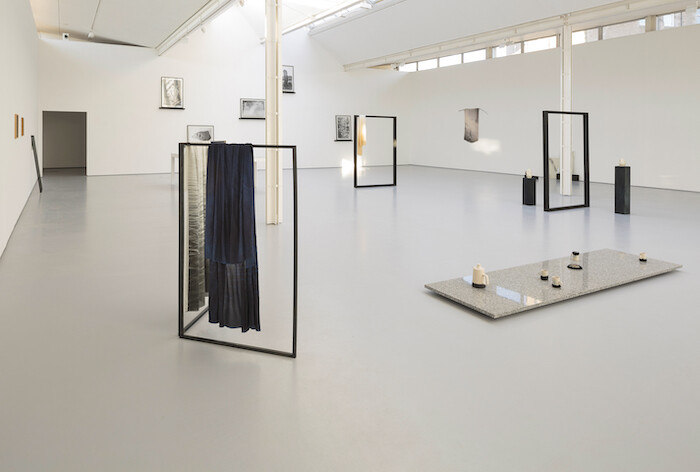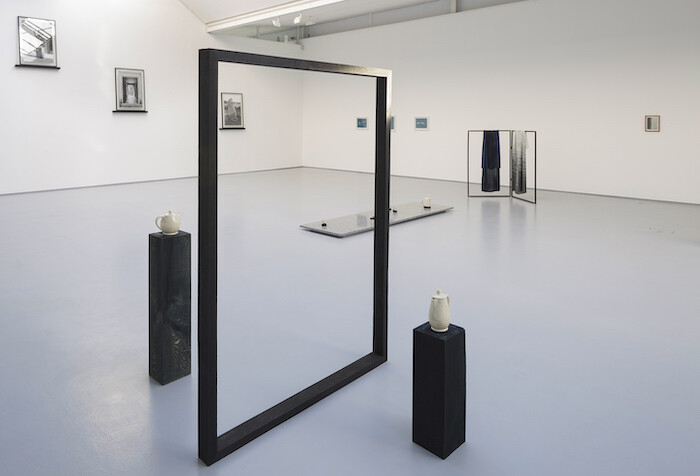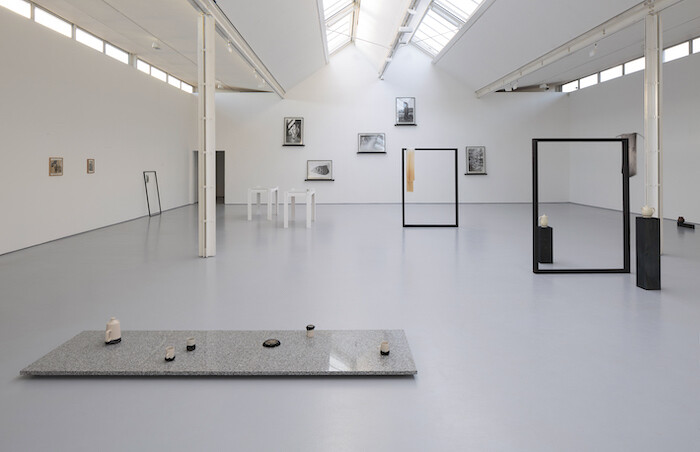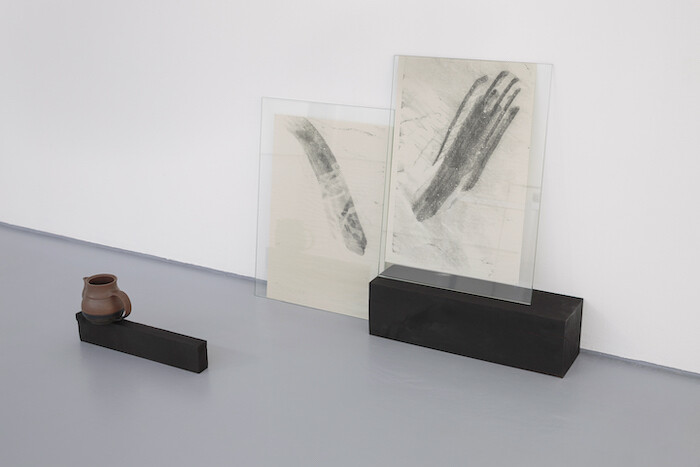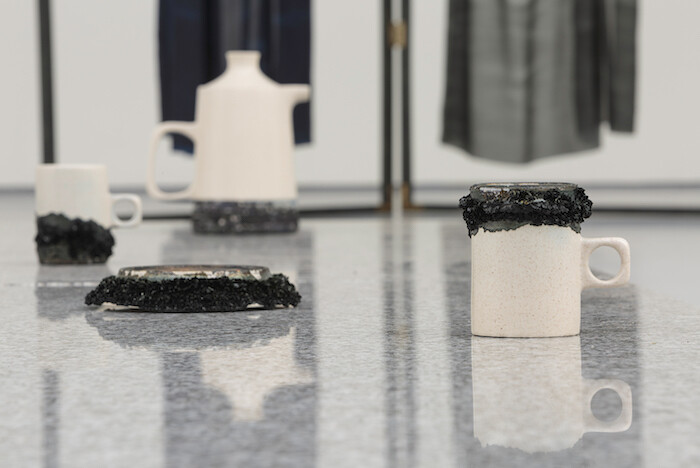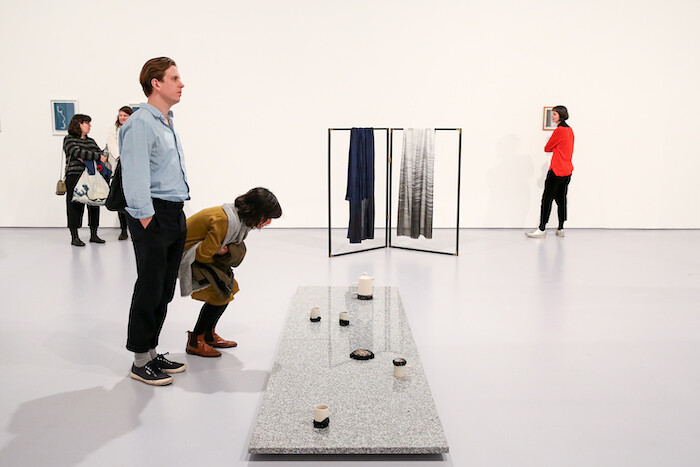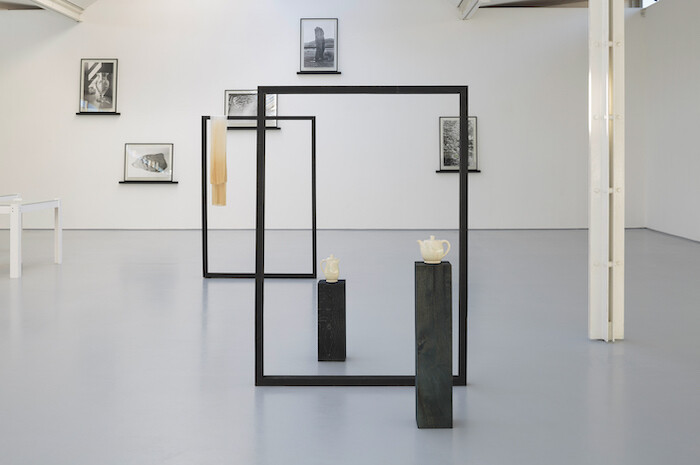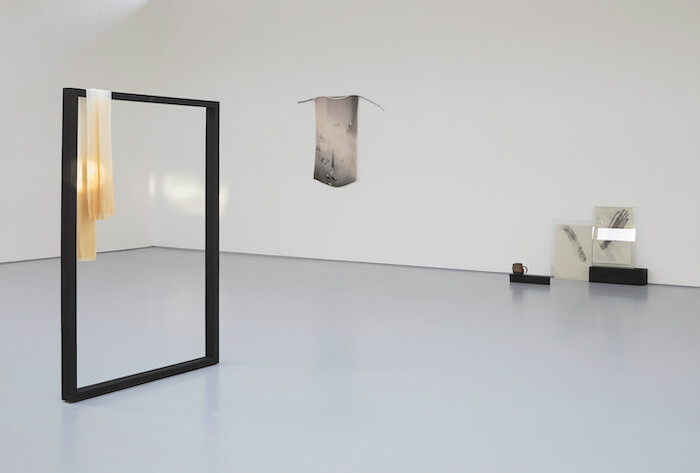Living beings leave traces in the fabric of the world. In “Pieces of You Are Here,” Lorna Macintyre’s solo exhibition at Dundee Contemporary Arts (DCA), some of these traces are material; others can only be imagined.
One starting point is a fragment of terracotta tile dating from the Roman occupation of the region. It was found during excavations at Carpow Roman Fort in Abernethy, a few miles upstream from DCA, and brought to the McManus Art Gallery and Museum in Dundee. Strikingly, the tile bears a double indentation of a dog’s paw. Macintyre’s large-scale black-and-white photograph of the object (Paw, 2018) roots the exhibition in the earth, in archaeology and archiving, and in the material presence of a lost living moment. One can only imagine the dog sauntering across the surface of the clay as it was left to dry, not yet fully hardened to the world. What must the dog have felt as her paw pressed gently into the surface? How might the maker have responded?
Across photography, printmaking, and sculptural installation, “Pieces of You Are Here” consists of many such moments, where a body touches a world: hands and handles, tools, techniques, and forms of making that stem sometimes from painstaking processes, sometimes from unconscious moments. In the large, sky-lit main gallery at DCA, the exhibition’s muted tones and tactile materiality create a powerful tranquility. Meaning oscillates between spaces of private domesticity and the museums and galleries in which memory is institutionalized for posterity or the public. An accompanying book with texts by DCA’s Head of Exhibitions Eoin Dara and writer Quinn Latimer provides a richly suggestive supplement.
Throughout the exhibition, and in keeping with Macintyre’s practice, the image is always material (and materiality always mortal). Silks printed with photographic images and stained with grape or pomegranate juice hang from branches of burnt elder (Ingrid and Cathy, both 2018); wooden frames have been burnt or stained with tea or coffee. The title work Pieces of You Are Here (2018) is a vitrine of objects that includes offcuts and crystals from the cyanotype process. In Device (i) (Wet and Dry) (2018), two lengths of silk hang from a frame of oak and brass: one is all grays, printed with an image of rippling water; the other has been dyed with indigo, and is regularly sprayed with water to keep it dark and wet. A little puddle forms on the gallery floor.
Such materiality exists in time and is therefore subject to processes of erosion, loss, and various forms of growth. In the vitrine are three spoons which appear to have been buried: one is coated in blue-green crystals, another tarnished black, and the third, bearing a coat of arms and Latin motto, is black-green and crumbling, completely eaten through in places. Elsewhere, a large, polished oblong of Dalbeattie granite lies flat on the gallery floor, like a layer of ground (Luna, 2018). An earthenware tea set placed atop it attests to the transformation of this earth through labor, and to the sadness that lingers when industry dies. Encircling the cups and saucers, dark crystals grow, blackly iridescent like coal or the soft dark under feathers of the baby raven that I am now imagining here.
The “here” of the exhibition’s title is alluringly unclear. On the one hand, the exhibition references multiple locations. Nine photographs point outward and backward to places of historic or personal significance: an archaeological museum in Rome; forests and castles in Latvia; the medieval Pictish stones of Aberlemno, Scotland. Each is shot in black and white and mounted on a shelf of burnt oak. On the other hand, the installation creates its own “here,” a space that the visitor moves through. Human-height rectangles frame views through the gallery. Also made of burnt oak, these create an analogy between the acts of the viewing a photographic past and of being physically present in the gallery.
One work stands a little apart: the exhibition’s single moment of visible movement. Low down in the corner of a small side gallery, a television monitor shows a baby’s arm, a hand flexing independently from a body that remains out of shot, like the twitching tail of a snoozing cat. Could this be the titular “you”?
Much of the work is on the floor: viewers have to kneel a lot. I’m on my haunches before a pair of prints (The Unreal & The Real, 2018), housed behind glass and leaning against the gallery wall, when, without thinking, my hand maps across the five smearing marks made by Macintyre and my arm traces the sweeping movements I imagine she must have made. Some traces are physical, others are imaginary. And the beauty that prints its paw upon me still is the never quite knowing which is which.

